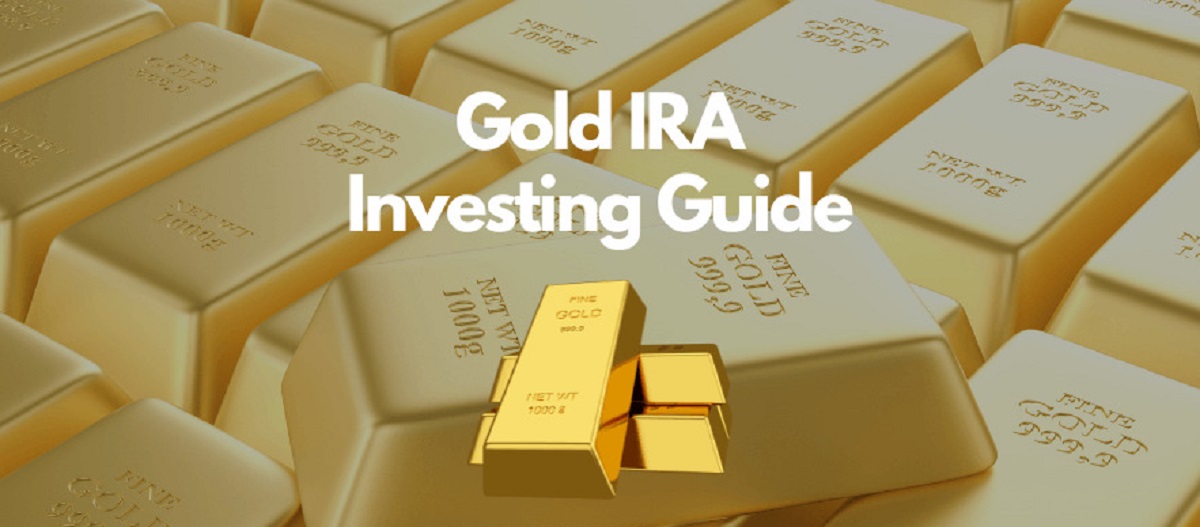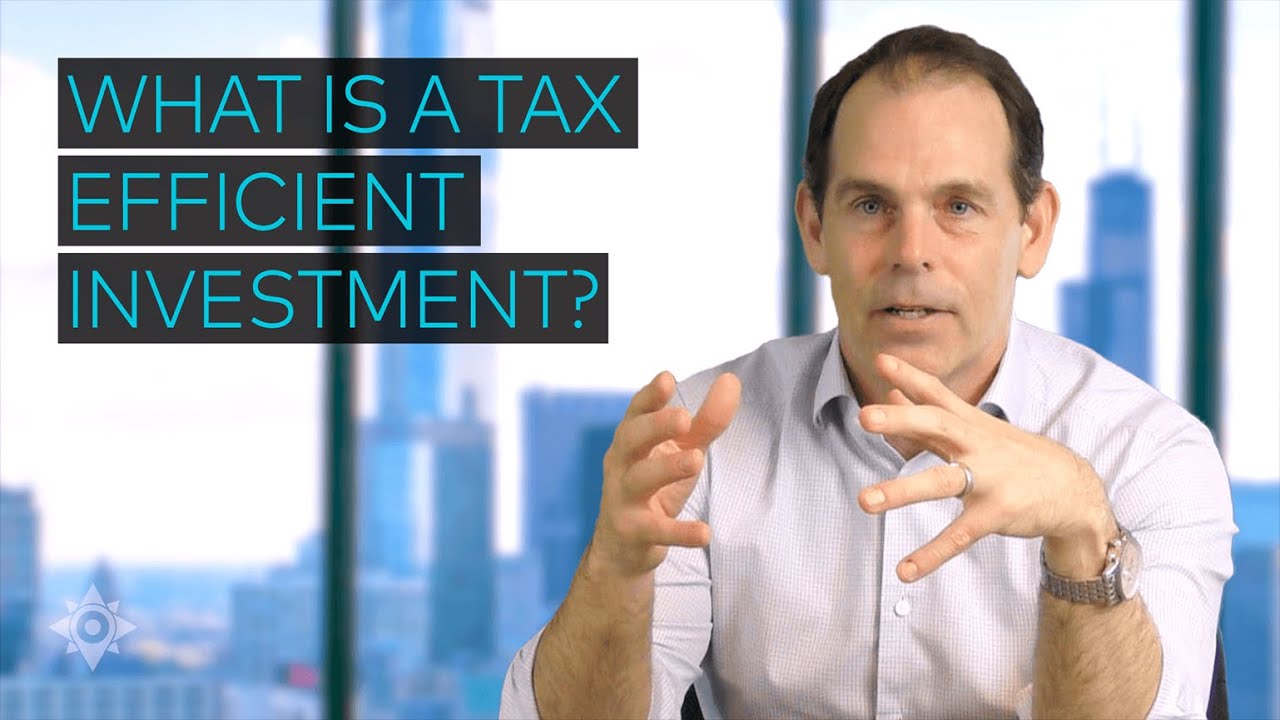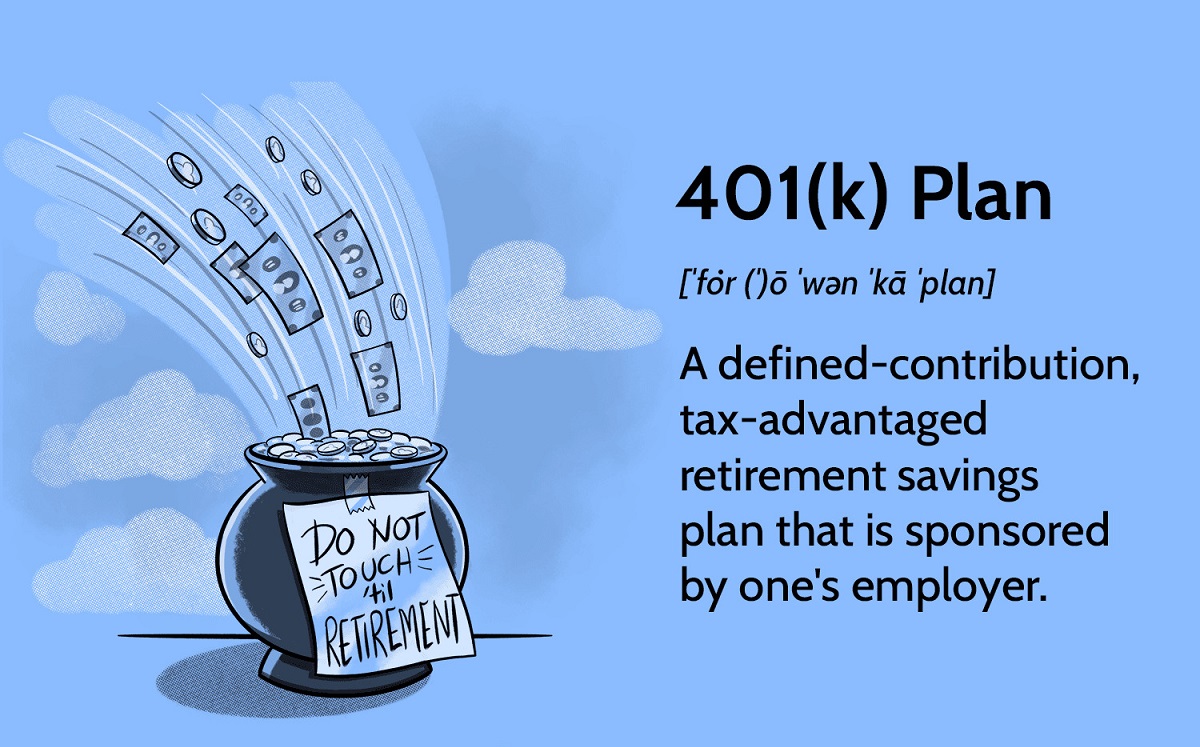Introduction
Investing in a Roth IRA is a smart financial move that can provide tax-free growth and income during retirement. However, choosing the right investments for your Roth IRA can be a daunting task. With a wide range of options available, it’s important to understand the different investment possibilities to make informed decisions that align with your financial goals and risk tolerance.
Before diving into specific investment options, let’s first understand the basics of a Roth IRA. Unlike a traditional IRA, contributions to a Roth IRA are made with after-tax dollars, meaning you don’t get an immediate tax deduction. However, the real advantage of a Roth IRA lies in the fact that your earnings grow tax-free and qualified withdrawals in retirement are also tax-free. This makes it an attractive option for long-term retirement savings.
When it comes to investing within a Roth IRA, one of the most important factors to consider is your time horizon. Since you won’t be withdrawing the funds until retirement, you have the advantage of a longer investment horizon. This means you can potentially take on more risk and benefit from the power of compounding over time.
With that said, let’s explore some of the top investment options for a Roth IRA:
Stocks
Stocks, also known as equities, are shares of ownership in a company. Investing in individual stocks within your Roth IRA can provide the opportunity for long-term capital appreciation. When you buy stocks, you become a shareholder and have the potential to benefit from the company’s growth and profitability.
One of the advantages of investing in stocks is the potential for higher returns compared to other investment options. However, it’s important to note that stocks are also associated with higher risk. The stock market can be volatile, and individual stocks may experience significant price fluctuations. Therefore, it’s crucial to do thorough research and diversify your investments to minimize risk.
Diversification can be achieved by investing in a variety of stocks across different sectors and geographic regions. This can help spread the risk and reduce the impact of any single company’s performance on your overall portfolio. Additionally, consider investing in mutual funds or exchange-traded funds (ETFs) that provide exposure to a basket of stocks, offering instant diversification with lower investment minimums.
It’s important to note that investing in stocks requires a long-term perspective. The stock market can experience short-term fluctuations, but over the long run, it has historically delivered impressive returns. As a Roth IRA investor, you have the advantage of a longer time horizon, allowing you to ride out market volatility and potentially reap the rewards of compounding growth.
When selecting individual stocks, consider factors such as the company’s financial health, management team, competitive advantage, and growth potential. Look for companies with a track record of consistent earnings and a history of paying dividends, especially if you’re seeking income from your investments.
Ultimately, investing in stocks within your Roth IRA can be a powerful way to build wealth over time. However, it’s crucial to do your due diligence and consult with a financial advisor if needed to ensure your stock investments align with your overall investment strategy and risk tolerance.
Bonds
Bonds are fixed-income securities that are considered less volatile than stocks. When you invest in bonds within your Roth IRA, you are essentially lending money to the issuer, which can be governments, municipalities, or corporations, in exchange for regular interest payments and return of the principal upon maturity.
One of the key advantages of investing in bonds is their relative stability and predictable income stream. Bonds are typically less risky than stocks and can provide a steady stream of interest payments, making them suitable for conservative investors or those seeking income from their investments.
There are various types of bonds available for investment, including government bonds, corporate bonds, and municipal bonds. Government bonds, such as U.S. Treasury bonds, are considered the safest as they are backed by the full faith and credit of the government. Corporate bonds carry slightly more risk but offer higher yields, while municipal bonds provide tax advantages for investors in higher tax brackets.
When investing in bonds, it’s important to consider factors such as credit risk, interest rate risk, and duration. Credit risk refers to the likelihood of the issuer defaulting on their payment obligations, while interest rate risk refers to the impact of changes in interest rates on the value of the bond. Duration measures the sensitivity of a bond’s price to changes in interest rates, with longer durations indicating higher price volatility.
To mitigate risk and achieve diversification, consider investing in bond mutual funds or ETFs that provide exposure to a portfolio of bonds. This allows you to spread your investment across different issuers and maturities, reducing the impact of any single bond on your overall portfolio.
While bonds are generally considered safer than stocks, it’s important to note that they are not entirely risk-free. Bond prices can still fluctuate based on changes in interest rates and economic conditions. Therefore, it’s crucial to carefully evaluate the credit quality of the issuer and diversify your bond investments to manage risk effectively.
In summary, investing in bonds within your Roth IRA can provide stability, regular income, and lower volatility compared to stocks. Consider your risk tolerance and investment objectives when choosing the types of bonds to invest in and diversify your bond holdings to manage risk effectively over the long term.
Exchange-Traded Funds (ETFs)
Exchange-Traded Funds (ETFs) are investment funds that trade on stock exchanges, just like individual stocks. ETFs are designed to track the performance of a specific index, sector, or asset class. They offer a convenient and cost-effective way to gain exposure to a diversified portfolio of securities within your Roth IRA.
One of the primary benefits of investing in ETFs is instant diversification. By owning an ETF, you effectively own a small portion of each underlying asset in the fund. This diversification helps spread risk and potentially reduces the impact of individual company or sector performance on your overall portfolio.
ETFs also provide flexibility in terms of investment options. They cover a wide range of asset classes, including stocks, bonds, commodities, and even specific sectors or themes. This allows you to tailor your investments to align with your investment strategy and risk tolerance.
Another advantage of ETFs is their liquidity. Since they trade on stock exchanges, you can buy or sell ETF shares throughout the trading day at market prices. This provides you with the ability to quickly adjust your portfolio or take advantage of market opportunities when needed.
Furthermore, ETFs typically have lower expense ratios compared to actively managed mutual funds. This is because ETFs passively track an index rather than relying on active fund managers. The lower costs associated with ETFs can translate into higher overall returns for investors over the long term.
When selecting ETFs for your Roth IRA, consider factors such as the fund’s expense ratio, tracking error, trading volume, and the index or strategy it tracks. Additionally, evaluate the fund’s performance history and its level of diversification to ensure it aligns with your investment goals.
It’s important to note that like any investment, ETFs also carry some level of risk. The value of an ETF can fluctuate based on the performance of the underlying assets. Additionally, there may be trading costs associated with buying or selling ETF shares, especially if they are thinly traded.
Overall, ETFs offer a flexible and cost-effective investment option for your Roth IRA. By diversifying your portfolio with ETFs that match your investment strategy, you can potentially achieve long-term growth and maintain a balanced and well-diversified portfolio.
Mutual Funds
Mutual funds are investment vehicles that pool money from multiple investors to purchase a diversified portfolio of stocks, bonds, or other assets. These funds are managed by professional fund managers who aim to generate returns for investors. Investing in mutual funds within your Roth IRA offers several advantages.
One of the key benefits of mutual funds is instant diversification. By investing in a mutual fund, you gain exposure to a broad range of securities, which helps spread risk and reduces the impact of individual stock or bond performance on your portfolio. This diversification is particularly beneficial for investors with limited capital or those seeking a hands-off approach to investing.
Mutual funds also provide access to professional portfolio management. The fund manager conducts research and makes investment decisions on behalf of the investors. This expertise can be valuable, especially if you do not have the time or knowledge to research individual stocks or bonds yourself.
Another advantage of mutual funds is their liquidity. They can be bought or sold at the end of each trading day at the net asset value (NAV) price. This means that you have the flexibility to enter or exit your investment at a known price, making it easier to manage your portfolio and respond to changing market conditions.
When investing in mutual funds, it’s important to consider the fund’s investment objectives, risk profile, performance history, expense ratio, and the experience and track record of the fund manager. This information can help you evaluate whether a particular mutual fund aligns with your investment goals and risk tolerance.
It’s also worth noting that mutual funds come in different types, such as equity funds, bond funds, index funds, and target-date funds. Equity funds focus on stocks, bond funds invest in fixed-income securities, index funds aim to replicate the performance of a specific market index, and target-date funds adjust their asset allocation based on the investor’s expected retirement date. Choose the type of mutual fund that suits your investment strategy and risk appetite.
While mutual funds offer convenience and diversification, it’s important to be mindful of the expenses associated with them. Mutual funds typically charge management fees, which are expressed as an expense ratio. These fees can eat into your returns over time, so it’s essential to compare expense ratios and choose funds that offer a balance between performance and cost.
In summary, mutual funds can be an excellent investment choice for your Roth IRA. They provide diversification, professional management, and easy access to the stock and bond markets. By selecting mutual funds that align with your investment goals, you can potentially grow your retirement savings over time.
Real Estate Investment Trusts (REITs)
Real Estate Investment Trusts (REITs) are investment vehicles that own and operate income-generating real estate properties. Investing in REITs within your Roth IRA offers a unique opportunity to participate in the real estate market without the need for direct ownership of physical properties.
One of the primary advantages of investing in REITs is the potential for regular income. REITs are required by law to distribute a significant portion of their taxable income as dividends to shareholders. This makes REITs a popular choice for income-focused investors seeking consistent cash flow.
REITs also provide the benefit of diversification. By investing in a REIT, you gain exposure to a diversified portfolio of properties in various sectors, such as residential, commercial, industrial, or healthcare. This diversification helps spread risk across different real estate asset classes and can help mitigate the impact of any single property’s performance on your overall investment.
Additionally, REITs offer liquidity and ease of investing. They trade on major stock exchanges, allowing investors to buy and sell shares at market prices. This provides flexibility and the ability to quickly adjust your real estate holdings within your Roth IRA.
When considering REIT investments, it’s important to evaluate the fundamentals of the underlying real estate market, the management team, and the quality and occupancy rates of the properties owned by the REIT. Understanding the geographic locations, property types, and tenant mix can help you assess the potential for long-term growth and income.
It’s also worth noting that there are different types of REITs available, including equity REITs, mortgage REITs, and hybrid REITs. Equity REITs primarily own and operate income-producing properties, while mortgage REITs invest in real estate debt, such as mortgages and loans. Hybrid REITs combine elements of both equity and mortgage REITs. Choose the type of REIT that aligns with your investment objectives and risk tolerance.
It’s important to be aware that investing in REITs carries certain risks. The real estate market can be affected by factors such as economic conditions, interest rates, and property demand. Additionally, the performance of a REIT can be influenced by the quality of its management, property selection, and overall industry trends. Therefore, it’s crucial to conduct thorough research and diversify your REIT investments to manage risk effectively.
In summary, investing in REITs within your Roth IRA can provide exposure to the real estate market, potential income, and diversification benefits. By selecting high-quality REITs and considering the specific risks associated with real estate investments, you can potentially grow your retirement savings over the long term.
Certificates of Deposit (CDs)
Certificates of Deposit (CDs) are low-risk investment vehicles offered by banks and credit unions. Investing in CDs within your Roth IRA provides a secure way to grow your savings with a fixed interest rate over a predetermined period.
One of the key advantages of CDs is their guaranteed return. When you purchase a CD, you agree to keep your money deposited with the financial institution for a specific term, ranging from a few months to several years. In return, the institution pays you a fixed interest rate for the duration of the CD. This makes CDs an attractive option for risk-averse investors looking for stable and predictable returns.
CDs also offer principal protection, meaning that the initial amount you invest is insured by the Federal Deposit Insurance Corporation (FDIC) up to $250,000 per depositor, per institution. This provides an extra layer of security, especially for those concerned about the preservation of their capital.
The term length of a CD can vary, and the interest rate offered tends to be higher for longer-term CDs. This allows investors to choose a CD that aligns with their investment timeline and financial goals. However, it’s important to note that withdrawing funds from a CD before the maturity date may result in penalties or loss of interest.
When considering CDs for your Roth IRA, it’s essential to compare interest rates and terms offered by different financial institutions to maximize your returns. It’s also worth exploring options such as high-yield CDs or promotional rates that may be available for a limited time.
It’s important to be aware that CDs tend to offer lower returns compared to other investment options such as stocks or mutual funds. However, they provide stability and preservation of capital, making them suitable for conservative investors or those looking to diversify their portfolio.
While CDs offer minimal risk, they may not provide a high enough return to keep pace with inflation. In such cases, consider a laddering strategy where you invest in a series of CDs with different maturity dates. This allows you to take advantage of higher interest rates on longer-term CDs while maintaining liquidity as each CD matures.
In summary, investing in CDs within your Roth IRA can provide stable and predictable returns with principal protection. By comparing interest rates, terms, and utilizing a laddering strategy, you can potentially achieve steady growth and preserve your capital over time.
Peer-to-Peer Lending
Peer-to-Peer (P2P) lending, also known as marketplace lending, is an innovative investment option that connects borrowers directly with lenders through online platforms. Investing in P2P lending within your Roth IRA allows you to potentially earn attractive returns by lending money to individuals or small businesses.
One of the main advantages of P2P lending is the potential for higher yields compared to traditional fixed-income investments. By cutting out intermediaries such as banks, P2P lending platforms can offer borrowers lower interest rates and provide lenders with enhanced returns.
P2P lending also provides the opportunity to diversify your investment portfolio. Instead of investing solely in stocks or bonds, you can allocate a portion of your Roth IRA funds to P2P loans. This can help spread risk across different asset classes and potentially enhance your overall investment returns.
Additionally, P2P lending platforms often provide detailed borrower profiles and credit risk assessments, allowing you to evaluate the creditworthiness of potential borrowers. This transparency enables you to make informed investment decisions and choose loans that align with your risk tolerance.
It’s important to note that P2P lending does carry some level of risk. Just like any loan, there is a possibility of default by borrowers, leading to potential loss of principal or interest payments. However, many platforms have risk assessment mechanisms and collection procedures in place to help minimize these risks.
When investing in P2P lending, it’s crucial to diversify your loans across different borrowers to mitigate the impact of any individual loan default. Most platforms allow you to invest small amounts in multiple loans, reducing the concentration of risk.
It’s also important to properly vet the platform you choose to invest through. Look for platforms with a solid track record, robust risk assessment procedures, and transparent fee structures. Conduct thorough due diligence and consider factors such as the platform’s loan origination process, borrower default rates, and investor protection measures.
As with any investment, it’s essential to carefully evaluate your risk tolerance and investment objectives before investing in P2P lending. Consider consulting with a financial advisor who can help you assess the risk-reward profile and determine the appropriate allocation for your Roth IRA.
In summary, P2P lending offers an alternative investment opportunity within your Roth IRA, potentially providing higher returns than traditional fixed-income investments. By diversifying your investments and carefully selecting loans on reputable platforms, you can participate in the lending market and potentially grow your retirement savings.
Precious Metals
Investing in precious metals, such as gold, silver, platinum, and palladium, can be a viable option to diversify your Roth IRA portfolio. Precious metals have been considered a store of value for centuries and can act as a hedge against inflation and economic uncertainty.
One of the main advantages of investing in precious metals is their ability to retain value over time. Unlike traditional currencies, which can be subject to depreciation, precious metals have a long history of maintaining their worth. They are often viewed as a safe haven investment during times of economic downturns or geopolitical instability.
Precious metals can also provide protection against inflation. When the value of a currency decreases, the price of precious metals tends to rise, maintaining the purchasing power of the investor. This can be especially beneficial for long-term investors looking to preserve their wealth.
Investing in precious metals within your Roth IRA offers tax advantages. Any gains from the sale of precious metals held within the Roth IRA are typically tax-free, allowing for potential tax savings when compared to investing in precious metals outside of a retirement account.
There are several ways to invest in precious metals within your Roth IRA. You can purchase physical bullion, such as gold coins or bars, from reputable dealers. Alternatively, you can invest in exchange-traded funds (ETFs) or mutual funds that hold a portfolio of precious metals. These investment vehicles offer the advantage of liquidity and ease of trading, as the precious metals are held and managed by the fund.
It’s important to note that investing in precious metals does carry certain risks. The price of precious metals can be volatile, and just like any investment, there is the potential for loss. Additionally, there may be costs associated with storing physical bullion or fees related to ETFs and mutual funds, so it’s essential to factor in these expenses.
When investing in precious metals, it’s important to consider your investment horizon and risk tolerance. Precious metals can serve as a long-term investment strategy, but their short-term price fluctuations can be influenced by various factors, including economic indicators, geopolitical events, and market sentiment.
In summary, investing in precious metals within your Roth IRA can provide diversification, protection against inflation, and potential tax advantages. Whether you choose to invest in physical bullion or precious metal-backed ETFs/mutual funds, it’s crucial to carefully consider your investment goals and consult with a financial advisor if needed to determine the appropriate allocation for your portfolio.
Choosing the Right Investments for Your Roth IRA
Selecting the optimal investments for your Roth IRA is crucial for maximizing your retirement savings. Consider the following factors when choosing the right investments for your Roth IRA:
Time Horizon: Assess your time horizon, or the number of years until you plan to start withdrawing funds from your Roth IRA. A longer time horizon allows for a more aggressive investment strategy, while a shorter time horizon may require a more conservative approach.
Risk Tolerance: Evaluate your risk tolerance, or your willingness and ability to withstand market fluctuations. If you’re comfortable with higher levels of risk, you may consider investing in stocks or more volatile assets. For a lower risk tolerance, bonds or other fixed-income investments might be more suitable.
Diversification: Diversify your Roth IRA investments to spread risk across different asset classes. Consider investing in a mix of stocks, bonds, real estate, precious metals, and other assets to reduce the impact of any single investment’s performance on your overall portfolio.
Goals and Objectives: Clarify your financial goals and objectives. Are you seeking growth, income, or a combination of both? This will help determine the types of investments that align with your specific goals.
Costs and Fees: Consider the costs and fees associated with the investments you choose. Look for investment options with reasonable expense ratios, transaction fees, and custody fees. Minimizing costs can help improve your investment returns over time.
Evaluate Performance: Research and evaluate the historical performance of the investments you are considering. Analyze factors such as long-term returns, risk-adjusted performance, and consistency. While past performance does not guarantee future results, it can provide valuable insights.
Seek Professional Advice: If you are unsure about which investments to choose or need guidance, consider consulting with a qualified financial advisor. They can help assess your risk profile, provide personalized recommendations, and ensure your investments align with your financial goals and risk tolerance.
Keep in mind that the specific investments you choose for your Roth IRA should align with your individual circumstances and long-term financial objectives. Regularly review and reassess your investments to ensure they remain in line with your changing goals and risk tolerance.
Conclusion
Choosing the right investments for your Roth IRA is a critical decision that can greatly impact your financial future. By understanding your time horizon, risk tolerance, and investment goals, you can create a well-diversified portfolio that aligns with your unique circumstances.
Stocks offer the potential for growth, while bonds provide stability and income. ETFs and mutual funds offer instant diversification, while REITs provide exposure to the real estate market. CDs offer security and fixed returns, while P2P lending allows you to participate in the lending market. Precious metals can act as a store of value and a hedge against inflation.
It’s important to thoroughly research and evaluate each investment option before making a decision. Consider factors such as historical performance, risk factors, and costs. Diversify your portfolio to mitigate risk and consult with a financial advisor if needed to ensure your investments align with your long-term goals.
Remember that investing in a Roth IRA provides tax advantages, as your earnings grow tax-free and qualified withdrawals are tax-free in retirement. This makes it an attractive vehicle for building long-term wealth.
Lastly, regularly review and reassess your investments to ensure they remain in line with your goals. As your circumstances change, so too might your investment strategy. Stay knowledgeable about market trends and seek professional advice when needed.
By strategically selecting the right investments for your Roth IRA and staying disciplined in your approach, you can pave the way for a comfortable and financially secure retirement.

























